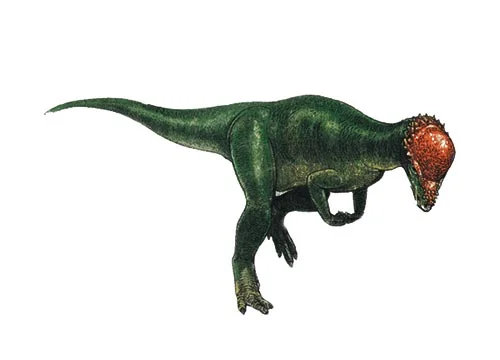Tylocephale (Swollen head)

Tie-lo-sef-a-lay
T. Maryanska and H. Osmolska - 1974
Herbivore
Estimated 2 meters long
Euornithopod
T. gilmorei (type)
Mongolia - Barun Goyot Formation
Late Cretaceous, 70 million years ago
Tylocephale Facts
Tylocephale, meaning “swollen head,” is a genus of pachycephalosaurid dinosaur that lived during the Late Cretaceous period, around 70 million years ago. Its fossils have been found in what is now Mongolia and Russia.
Like other pachycephalosaurids, Tylocephale is known for its thickened, dome-shaped skull, which was used for head-butting contests with other members of its own species. The skull of Tylocephale was particularly thick and rounded, giving it a distinctive, bulbous appearance.
Tylocephale was a small dinosaur, measuring up to 6.5 feet (2 meters) in length and weighing around 100 pounds (45 kilograms). It had a slender, agile body and long, powerful hind legs, which it likely used for running and jumping.
Although much of what we know about Tylocephale comes from its distinctive skull, researchers have also found evidence of its diet and behavior. It was likely a herbivore, feeding on a variety of vegetation such as ferns, cycads, and conifers. It may have also been capable of bipedal locomotion, using its powerful hind legs to run and jump.
The exact purpose of the thickened skull of Tylocephale is still the subject of debate among scientists. Some researchers believe that it was used primarily for defense against predators, while others think that it was primarily used in head-butting contests with other members of its own species.
In summary, Tylocephale was a small, agile dinosaur with a distinctive, thickened skull that gave it a bulbous appearance. It was likely a herbivore and may have been capable of bipedal locomotion. Its skull was likely used for head-butting contests with other members of its own species, but its exact function is still the subject of ongoing research and debate.



